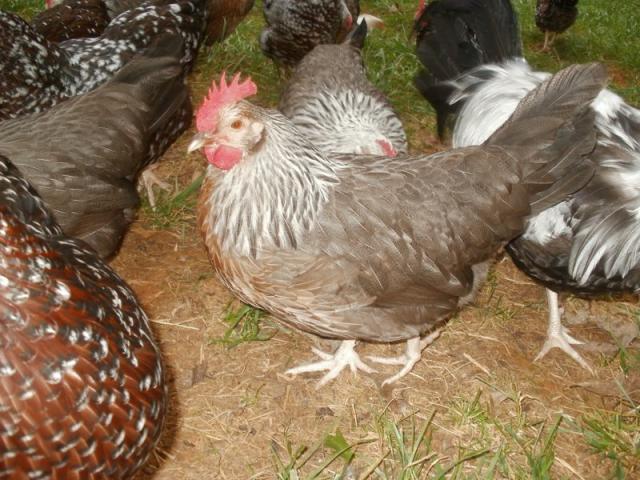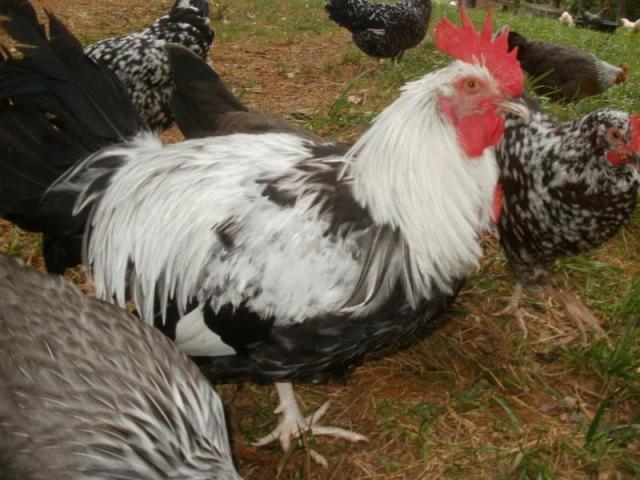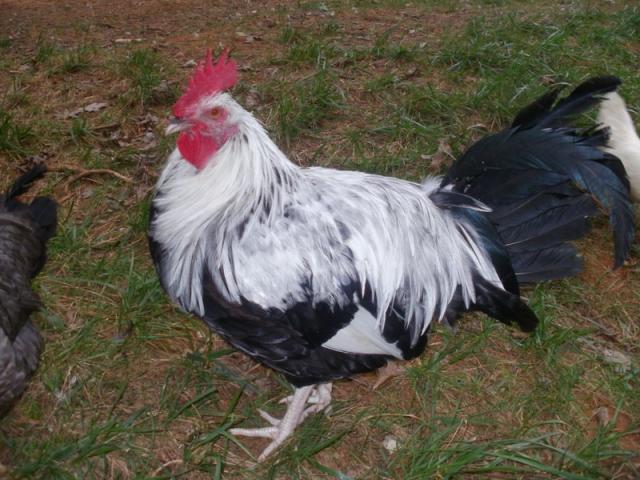Quote:
Hi Kim! Go to google books, and do a search for Dorkings. Many things are going to come up. The job will be piecing it all together. In a nutshell:
There is sepculative history and then more reliable, relatively recent history.
Speculatively, the Dorking comes from the Roman period via documentation with Columella. Positively, it all sounds great and is full of coincidences. Thus everyone lays claim to it as at least worthy of consideration. On the other hand, the fact that BBR and White birds (those referenced by Columella) are relatively universal patterns doesn't make one think that there could be no other possibility. Moreover, polydactyly--the fifth toe--can technically happen in any breed. Thus, the assertion that there were red and white blocky fowls with five toes in Rome at the time of Christ is on the one hand interesting but certainly not conclusive. Aldrovandi also makes mention of Dorking-esque birds for which claims are made.
In more recent history, since the 1700's my deductions from reading many old texts have been:
--The whites were the most prominent and were by far the most commented on in the early period.
--The whites were the basis for Dorking fame as excellent meat fowl.
--The original White Dorking was smaller and well meated with white ear lobes.
--The original white Dorking existed in both Rose and single comes, but the Rose comb was quickly coming to be the dominant type.
--Efforts to increase the size of White Dorkings and to change their earlobes red were met with suspicion by the old-timers of the day. The former because larger size could mean bigger bones and more offal, the latter because it was not authentic.
--Various colored varieties begin to be mentioned during the middle of the 1800's. The primary one seems to be a grey spotted fowl that was prominent in Ireland. Thesse seem to be extinct. They, too, are called Dorkings and seem to become important in that town and area. There are complaints that the White Dorking had become a bit degenerate, which isn't impossible to believe yet niether does this continue to be a problem. Anyway, the idea that outcrossing for vigor would have happened is not hard to believe
--One starts to find mention of white Dorking imported into Plymouth, MA and upstate NY. They were white. Then Silver greys and Colored seem to start arriving a little later. The Coloreds are the largest, the SG's the medium, the Whites the smallest and least typey. However, going back to the original Dorking, it appears to have been a more rounded, less rectangular, medium sized fowl. It makes sense that the, perhaps, new shape and weight/size of the colored varieties did not suit it, and that it would have had to be bred to match these, perhaps, new requirements.
--Eventually, by the end of the 1800's and first part of the 1900's the SG's are in the lead. They were then picked up by hatcheries--the only variety to have been picked up by hatcheries--and have remained, therefore, the foremost variety numerically.
--Cuckoos are mentioned in England, but I've yet to find an American text that refers to them. The other colors don't enter into publication that I have yet found. Their authenticity seems rather secondary and anecdotal.
--There are several texts from both the UK and America that make no qulms about the Dorking being the single most ideal fowl for meat production, ye that the push was for yellow skin and apparently the fifth toe scared some folk off. It seems silly to me that single best meat bird was rejected for such superficial reasons, but hey, people are that way sometimes.
If I had to throw in my thoughts/conclusion, well, I guess it is rather plausible that the original five-toed stock hailed from Rome but from that point would have undergone many phases and evolutions. Almost certain outcrossings would have been made to native Old English Games. Columella claimed it to be a single combed bird. The OEG is single combed. I imagine the rose comb comes from the same source that gave us the rose comb in the hamburg, which also comes in a single comb. In the last few hundred years, all varieties are documentable with rose and single combs. I imagine that the Dorking started to come into its own as the Dorking with the original Whites but then outcrosses lead to larger fowl with improved hybrid vigor, which of course only makes sense. At this point, I think that color varieties have probably been crossed back and for and from side to side so frequently as to think that they are all more or less one.
Having crossed the whites with SG's and Coloreds, I can attest first hand that the majority of the other colors hatch out there. Moreover, crossed or not, sports from the whites are not uncommon.
Going forward, I think that our attentions are best focused on the four foremost varieties: White, Red, SG, and Colored. Combs in all could be Standardized in both rose comb and single. Of all of them, the only one that really seems to have a pre-SOP comb trend is the white, which was generally preferred in the rose.
Thanks for all the great info Joseph - I will be "leveraging" for the Mother Earth News Fair this weekend. I would like to start to compile some Dorking resources for the club, that we can make available to our members - what do you think?
Thanks,
Jen












